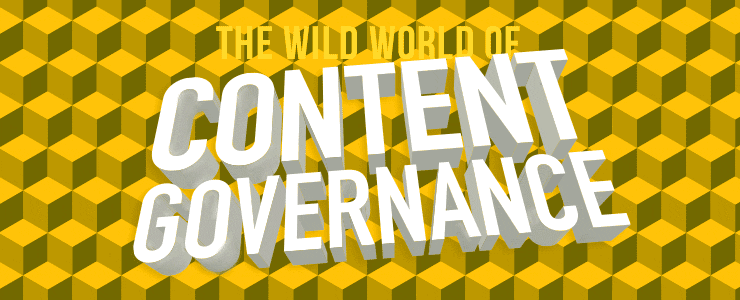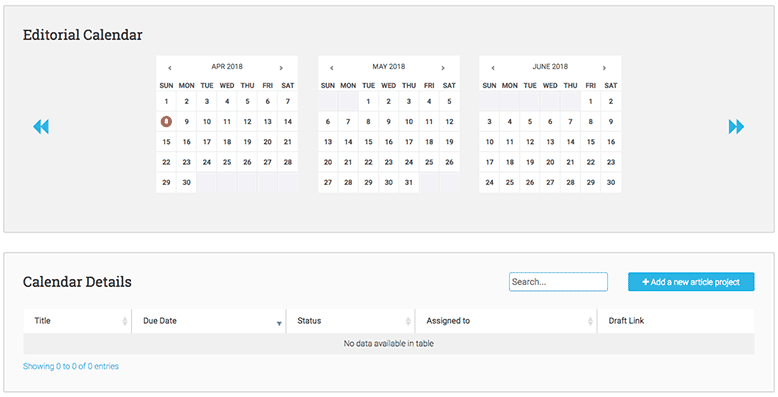Evergreen Content is More Sustainable

In this post, we unpack the long-term benefits of creating evergreen content as part of an effective and more sustainable content governance plan.
What is Evergreen Content?
All content should be remarkable—and worth sharing. A truly sustainable content strategy is driven by organizations that regularly care for and about their customers. Content should change minds—not drain phones.
— Andrew Boardman, Designing for Sustainability
True to its namesake, evergreen content maintains relevancy. It is content you publish that stands the test of time. In other words, it doesn’t go out-of-date quickly.
Also, evergreen content quickly and timelessly answers key questions customers ask about your product, service, brand, or area of expertise.
Finally, this type of content is crucial to a more sustainable content governance plan. It will save you time, money, and resources. Here’s how.
The Benefits of Evergreen Content
Because of its ongoing timeliness, evergreen content should be a core component of any successful content strategy:
- It represents content that your customers regularly ask for. Content that is optimized for search, drives qualified traffic and helps people more quickly answer questions they have.
- This type of content is also time-agnostic. It maintains relevance regardless of when people read it.
- Also, this type of content can be reused, re-shared, or reposted, preferably during a key point in a customer journey.
Plus, if most of your published content is evergreen, it doesn’t need to be updated as often, reducing the time and resources your organization spends managing it. More on that in a bit.
Make Less, Share More
Evergreen content is relevant to share velocity as well. There is no single hard and fast rule regarding how often is too often to share a piece of content. This will be different for every organization based on their resources, capacity, channels they use, and how engaged their audience is. We advise our clients to use data to drive these decisions.
However, evergreen content can help you increase sharing frequency without increasing your organizational capacity. Put simply, if a piece of content is relevant no matter when you share it, then you can share it more often.
Channel/Velocity Planning
Content strategists refer to this as channel and velocity planning. That’s a plan for how often to publish which pieces of content to which content channels, such as a blog, homepage, YouTube channel, and Twitter account. The velocity—or frequency that you post content in a particular place—varies channel by channel, based on what’s typical for that channel.
In other words, new content might only represent 25-50% of what you regularly publish. This will enable you to spend more time working on critical new efforts and campaigns, and less time coming up with content that people ask for again and again.
Most importantly, you do not need to reinvent the wheel to get results. You just need to give people what they want, on the channels they use, at the correct velocity.

Organizing Evergreen Content
When planning digital marketing campaign content, prioritize evergreen posts—ideally through a time-saving content calendar or related scheduling tool. This will help you more effectively manage the time and resources at your disposal.
Organize content by topic then choose the proper velocity and channel with which to share your content. Most importantly, measure the results of these efforts. Do more of what works and less of what doesn’t.
Finally, if your team has difficulty coming up with content clusters that can stand the test of time, try an audience pain point content mapping workshop. This should generate enough evergreen ideas to fuel a blog or FAQ section on your website for years to come.
Maintaining Content Relevance
Despite its continued relevancy, even time-agnostic content should be updated every now and again. Here are some reasons you might want to do this:
- Outdated Links: If you link to external resources—and for link-building purposes, you should—it is possible those links could become outdated or disappear entirely. It’s best to keep them current.
- SEO: Search engines do like fresh and helpful content. It’s always smart to continue asking “how might we make this post better?”
- Customer Service: Evergreen content can also serve as a repository of standardized responses to frequently asked questions. This is especially handy if you’re managing an FAQ section or community forum. However, business practices and policies change over time. So, too, should your content.
For example, this post was originally written in 2014. Over the years, links became outdated, we redesigned our processes to better serve our stakeholders, and sustainability—especially sustainable web design—became a much stronger focus at Mightybytes.
For all these reasons, we retooled the post to reflect our updated approach, even though much of the original information remains as relevant today as it was in 2014.
Create More Sustainable Content
Organizations spend huge amounts of time and money on content marketing. Many cut corners, churning out volumes of low-quality content generated by AI tools or underpaid freelancers. This is unsustainable for organizations, the customers they claim to serve, and the internet overall.
Instead, build up helpful evergreen content over time, and you can:
- better and more quickly answer common customer questions
- save time for more impactful future projects
- reduce the amount of irrelevant content cluttering up the internet
Everybody wins.
Digital Carbon Ratings, now in Ecograder.
Understand how your website stacks up against industry carbon averages with this new feature.
Try Ecograder


